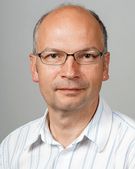GERoNiMO - Generalised EMF Research Using Novel Methods
Project Abstract
Rationale
The European population is increasingly exposed to new physical and chemical agents in the environment, some of which may be detrimental to public health. Among these, electromagnetic fields (EMF) are one of the most ubiquitous, and their application in new technologies continues to grow, with novel uses being actively developed and commercialised. Although there is substantial interest, and some concern, in the public and among public health professionals about possible health effects related to EMF, previous studies have been inconclusive.
Objectives
- To better understand mechanisms underlying possible health effects of EMF;
- To better characterise current and future population levels of EMF exposure in Europe;
- To further the state of knowledge on EMF and health;
- To improve health risk assessment of EMF; and
- To underpin policy development and propose non-technological means to reduce EMF exposure.
Strategy
GERoNiMO (Generalised EMF Research using Novel Methods) proposes an integrated pan-European approach, bringing together researchers from different disciplines, research institutions and member states to address key questions identified by recent European projects (e.g. European Health Risk Assessment Network on Electromagnetic Fields Exposure (EFHRAN)) and international bodies (e.g. World Health Organisation (WHO) International EMF Project Research Agenda).GERoNiMO proposes to build upon existing European resources (large-scale prospective cohort and case-control epidemiological studies of different populations, exposure assessment techniques, mechanistic and animal models, and health impact modelling) using, where appropriate, novel methods (including systems biology, and the integration of potential biological markers and innovative exposure assessment instruments into epidemiological studies) and existing expert networks to attain these objectives.
Through the use of different but complementary populations and approaches, GERoNiMO will, in particular, allow the investigation of the potential effects of exposure to radiofrequency fields (RF) and intermediate frequency fields (IF) – alone and in combination with other environmental/occupational exposures – on the risks of cancer, neurodegenerative diseases, behaviour, reproductive outcomes and aging.
Impact
The integrated approach in GERoNiMO will significantly improve the strength, coherence, credibility, visibility and coordination of European research into EMF and health, ultimately reducing fragmentation and improving the incorporation of evidence-based risk assessment into public health policy development and communication:
- Specifically, GERoNiMO will provide support to European Union (EU) and national regulatory bodies by improving reliability of research data on potential effects of EMF exposures.
- GERoNiMO will contribute to EU risk assessment through the application of novel approaches to EMF health research.
- Following the lead of previous EU-funded networks (EMF-Net and EFHRAN), GERoNiMO will contribute to EU management and communication activities through:
- the improved evaluation of cumulative and integrated personal exposure;
- the evaluation of non-technological means to reduce current and predicted future exposures and their likely health impact;
- a Fast Response Team (FRT) on EMF and Health that will provide informed opinions in response to questions issued by the European Commission on EMF and health issues to assist the EU in its communication and risk management activities; and
- delivering recommendations for best practice in risk communication and management to support EU policy makers.
